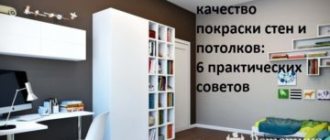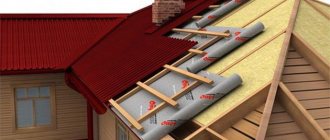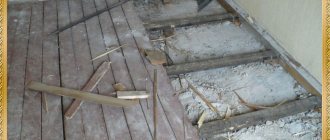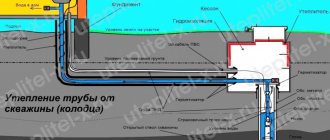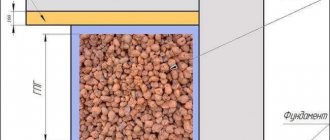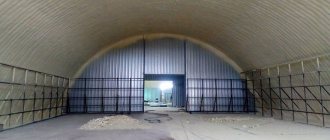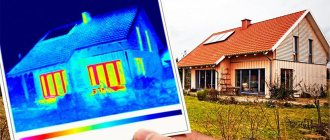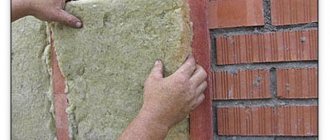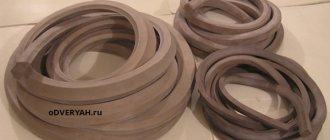Insulation Isolonon
Last time we talked about what liquid ceramic thermal insulation is, its characteristics and areas of application. Today we will talk about the already familiar material made of polyethylene foam. We will reveal effective and quick methods for insulating floors with Izolon, as well as walls and ceilings. Let’s say in advance that to obtain a high-quality thermal insulation layer, you need to use thick insulation, from 50 mm or more. Although the thermal conductivity of Izolon is quite low, with such a small thickness, frankly speaking, it is impossible to properly insulate. At the same time, the material has other useful qualities.
Areas of use of the self-adhesive variety "Isolona"
Izolon insulation is a composite of foamed polyethylene or NPE. The material may have a self-adhesive and reflective layer. Used for insulation and noise insulation, as well as soundproofing. Self-adhesive Izolon has outstanding technical characteristics and operational features, which allows it to compete with traditional materials in quality and cost.
This type of material is very convenient for installation. It allows you to save time and terms of putting the building into operation. Foil insulation in combination with the necessary accessories allows you to create a universal insulation system that solves the problems of capital and residential construction.
Types and characteristics of thermal insulation Izolon
Foamed polyethylene Izolon with and without foil.
Izolon is a brand that produces polymer materials for insulation, noise and sound insulation with a closed-cell structure. Product line:
- Isolon 100 – non-crosslinked polyethylene foam;
- Isolon 300 – chemically cross-linked polyethylene foam;
- Isolon 500 – physically cross-linked polyolefin foam;
- adhesive tapes;
- reflective insulation - foil foamed polyethylene or metallized lavsan film.
The scope of application of the material is very wide: from civil engineering to manufacturing. This is facilitated by high performance. Isolon insulation, characteristics:
- density from 25 to 100 kg/m. cube;
- thermal conductivity – 0.037 W/m*C;
- does not allow steam and water to pass through;
- foil materials absorb 97% of IR radiation.
Some items can withstand heating up to 100 degrees without changing their physical and chemical properties. The service life declared by the manufacturer is at least 30 years. All types of polyethylene foam absorb sound and vibration waves well.
The choice of insulation for a ventilation facade depends only on the material from which the walls are built. For wood, materials that allow steam to pass through are used; for concrete, anything is suitable.
You will find information about insulating hives with foam plastic here.
Specifications
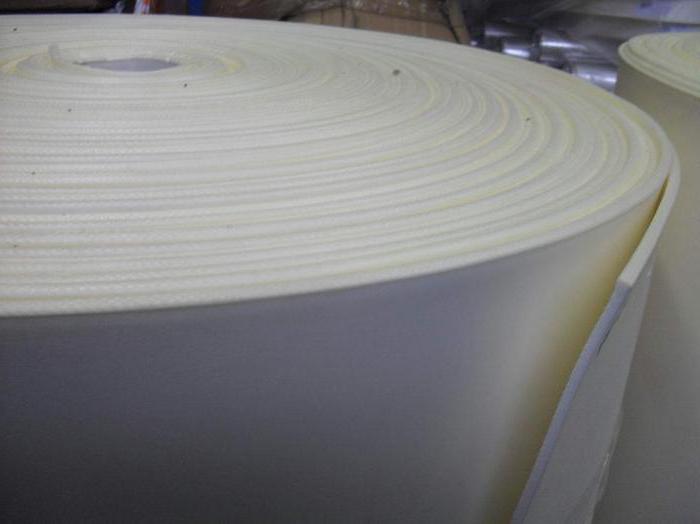
When answering the question of what Izolon is, it is worth considering its technical characteristics. Among others, density should be highlighted; it varies from 26 to 45 kg/m3. Water absorption does not exceed 0.1%. The effect of reflecting the radiation energy of the foil type of insulation is 97%.
Experts usually pay special attention to compressive strength; for the material being described, this parameter varies from 0.035 to 0.33 MPa. Thermal insulation can be used over a wide temperature range – from -60 to +125 °C. Elongation can reach 250%. The maximum elasticity index for Izolon is 130%.
Specific thermal capacity reaches 1.95 kJ/kg*s. According to state standards 30244, Izolon, depending on the type, may belong to the following flammability classes: G2-G4. Among the main characteristics is the ability to reduce impact noise. This characteristic is at the level of 20 dB. When purchasing material, you should also pay attention to vapor permeability, it is equal to 0.001 mg/mchPa.
Insulation of ceiling and floor with Izolon
Metallized lavsan film Izolon.
The simplest option for insulating a floor with Izolon is to use it as a lining under a laminate, although it is also possible to lay linoleum on top of foamed polyethylene. In addition, this material can be used in structural elements of a building, for example, on the ceiling and wooden floor laid on joists. The installation technique in both cases is very similar, so we will consider them together.
Naturally, Izolon thermal insulation as an independent insulation gives insignificant results, since its thickness is too small. Therefore, in order to get a high-quality thermal insulation cake, you need to use more solid insulation materials, for example, mineral wool. In this case, in addition to auxiliary protection against heat loss, foamed polyethylene can act as a vapor barrier. Mineral wool, especially glass wool, is prone to absorbing moisture from the air, especially if it is laid on the ceiling. Therefore, insulating the ceiling with Izolon in some cases is not only desirable, but necessary.
Correct insulation method:
- Mineral wool is laid between the floor or ceiling joists;
- Izolon is tensioned along the joists;
- the counter-lattice is stuffed;
- finishing is being installed.
It is quite acceptable to lay this material directly under the finishing, as sound insulation. To do this, it is enough to secure the material with a construction stapler on the working surface end-to-end and seal the joints with tape. If it is technically possible, it is better to leave a gap between the polyethylene foam and the finish. Even if there is moisture on the insulation, it will successfully evaporate and will not be absorbed into the finishing materials, which will significantly extend their service life. Many people are interested in the question of whether it is possible to insulate the floor with Izolon in a wooden house. This is allowed, but again, as independent thermal insulation, it gives almost no results.
Rigid thermal insulation cylinders made of mineral wool are used to insulate communications.
You can read about which non-flammable insulation materials for roofing are best here.
Choice of insulation
If you decide to insulate your home yourself, you will have to make several decisions:
- Which structures require insulation?
- The better to insulate each of them.
- Can you handle this yourself?
- How much money are you willing to spend on this?
Saving wisely is not a shame. Therefore, we recommend turning your attention to the new generation of insulation - foil Izolon. Due to its high reflectivity and low emissivity, Izolon will allow you to get the maximum effect from the thermal insulation of buildings.
By insulating with Izolon, you save not only money by reducing the thickness of the insulation, but also living space. This is important if you are the “lucky” owner of a small apartment with low ceilings and can only be insulated from the inside. The cost of Izolon, in comparison with traditional insulation, is an ideal combination of price and quality.
For your information! Do not forget that foil Izolon has a very low coefficient of vapor permeability and water absorption. That is why it does not require the use of additional vapor-hydroprotective films to perform thermal insulation functions.
Wall insulation with Izolon
It is important to lay the sheets end to end and seal the gaps.
As we have already found out, ordinary polyethylene foam does not provide the expected reduction in heat loss, so insulating walls with Izolon from the inside must be done with foil materials. The shiny surface will send heat rays back into the room. If the foil is glued to a polyethylene base, then the ability to absorb sounds and vibration, as well as retain water and steam, is added to the reflective properties. All this is necessary when you need to insulate a bathhouse, or rather a steam room.
Let's consider installation methods with additional insulation with mineral wool:
- We attach wooden blocks to the wall - in any order, the main thing is that later it will be convenient to stuff the counter-lattice;
- Mineral wool is placed randomly between the bars; you don’t even have to glue it to the wall;
- on top of the bars, Izolon insulation, foil-coated with the shiny side, is nailed into the middle of the room with a stapler;
- the rolls are spread end-to-end, and the cracks are sealed with aluminum-coated tape;
- the second tier of the lathing is nailed (counter-lattice);
- Any finish can be attached.
It is important to strictly follow the installation recommendations, especially with regard to the gap between the foil and the finish. It should be 15 mm or more.
This is necessary so that the material can realize its 100% potential. After all, the foil reflects IR rays, and they are transmitted only through the air; if there is no gap, then radiation is impossible in this case. Temperature will transfer from one material to another, and aluminum conducts heat very well. Therefore, instead of insulation, you can get the opposite result.
If we are talking about a sauna, then in addition to IR radiation, there is plenty of moisture there. It will condense on the foil insulation and, if there is no gap, it will certainly be absorbed into the finish. Dampness has never benefited any material; its service life in such conditions is catastrophically reduced.
Eliminating drafts
In this section we will look at areas not only of a country house, but also of an ordinary apartment, through which, in most cases, heat loss occurs.
Wall
Insulating walls with Izolon from the inside is a job quite accessible even to beginners in construction. To increase the thermal insulation effect between Izolon and the surface of the walls, it is advisable to leave space - an air cushion .
You can achieve what you want using the following materials and tools:
- Wooden planks.
- Drill and screwdriver.
- Furniture stapler.
The process is divided into three stages:
- The first step is to install the planks on the wall. The step between vertical posts should not exceed 90 cm.
- After which Isolon itself is attached. To do this, you need to fasten one edge to the outermost bar, and, after pulling the material, fix it to the next one. Do this until the very end, trying to hold the material tight.
- The last step is to seal all seams and joints with any adhesive tape, masking tape will do.
Complex insulation of a balcony with Izolon
In the photo the balcony is ready for finishing.
Insulation of a balcony with Izolon, like a loggia, should be carried out comprehensively. This means that thermal insulation must be installed everywhere: on the floor, ceiling and walls. Please note that without good, energy-saving windows, no insulation will help. The lion's share of the heat escapes through the glass (this is if everything is sealed). We have already written about how to check heat loss. High-quality insulation of a balcony with Isolon alone is nonsense; thick thermal insulation materials are needed. The best option is foam with a density of 25 kg/m. cube
We present to your attention the fastest and easiest way to comprehensively insulate a balcony:
- foam is glued to the walls and ceiling with adhesive foam;
- guides are placed on the floor level;
- between the guides you can simply put polystyrene foam in two layers with the joints spaced apart, all the cracks are foamed with the same adhesive foam;
- the entire balcony is covered with foil insulation with the shiny side in the middle of the room, the joints are taped;
- Logs are placed on the floor guides, and everything is covered with OSB board - the floor is ready;
- wooden blocks are drilled into the walls and ceiling through the foam plastic - this is the sheathing;
- trim is attached over the sheathing.
This method minimizes the use of an impact drill, and there is no need to dilute universal construction adhesive. It saves time and nerves, and the results are excellent. Everything will hold securely and will never fall off; you won’t even be able to tear it off on purpose.
Communities › Do It Yourself › Blog › Insulating the loggia!
I installed plastic windows on the loggia and then it just started... I did the insulation in the following way: - all the cracks and technological holes on the balcony were previously sealed, - the floor was 10cm thick foam plastic, foil insulation, chipboard, lenolium, - the walls were 5cm thick foam plastic , foil insulation and laminate sheathing, - ceiling - foam plastic 5cm thick, foil insulation and sheathing with plastic panels, - additional electricity was installed. As a log I used 50x100 timber on the floor and 50x50 on the walls. Everything else from the photo:
see also
Comments 70
Super! My wife is asking me to make a wardrobe too - I’ll think about it
Thank you) Yes, the closet is a necessary thing, all the rubbish is now hidden there =)))
Hello! — were all the cracks and technological holes on the balcony previously sealed with foam?
Basically brick and mortar in the first photo, and then small foam with mortar
Super! And I also sawed down the corner benches and lockers with a folding top for trash. And a folding table like on a train.
I also want to make a corner sofa with drawers, if it’s not difficult, send me your photos
If I don't forget, I'll take a photo this evening. I also messed up the closet)
Ventilation is a temporary measure. You close the window and condensation starts again. This is from experience.
How about ventilation? I insulated the same, but in winter I get a lot of condensation.
I’ll wait until winter and see if the windows on the balcony are almost always open.
What is the point of insulation if the windows are open?
The fact is that the windows open for ventilation.
How about ventilation? I insulated the same, but in winter I get a lot of condensation.
Is the window plastic? if so, then this problem can be solved by ventilating or installing ventilation on the window, it’s called a supply valve, google it...
not bad! a few questions: 1 sheathing is level everywhere or just flat? 2 why did you put chipboard on the floor (it absorbs moisture very well even from the air)? 3 I understand this is a warm loggia? If I was pursuing exactly this goal, it would have been necessary to insulate with extruded polystyrene foam! 4 why is the floor insulated with polystyrene foam (does the neighbor below have a glazed balcony?) The floor is insulated with cotton wool in two layers, overlapping the first. 5 why didn’t you cover the slopes on the balcony block? 6 in the last photo I can’t understand or it seems. Is there a gap between the window sill and the trim? does it feel like the trim is sticking out more than the window sill? If this happens, change the window sill urgently!
ps this is not at all bad! but there are still nuances!
1. I tried to level the sheathing, but in fact there are slight deviations, 2. Chipboard because I think that it won’t do anything, and the air doesn’t get in there, everything is hermetically sealed, and the previous chipboard has been lying there for more than 30 years and everything is fine. 3. I already wrote that I’m not going to make a separate warm room from the loggia, so that in winter it would be 20-30 degrees warmer than outside, and the foam itself is very warm 4. I basically didn’t use cotton wool because... I think that it cakes and accordingly the layer will be smaller. 5. I covered the slopes - I added a photo, but it turns out that more than 20 photos cannot be inserted. 6. Yes, the trim sticks out because... I made a window into the room long before the loggia was insulated, the last photo shows the final version, but I’m still thinking about how to finalize it. ps Even professionals have nuances.
to which the chipboard answered itself for 20 years... unfortunately the quality of this material today is simply disgusting! I’m telling you what I see every day (I work on furniture. Before that I worked on balconies and windows) saw sharpening is enough for literally 30 sheets of chipboard since they started adding sand to the composition! but much less glue! sand as a binder... in the workshop the sheets are standing up...
1. I tried to level the sheathing, but in fact there are slight deviations, 2. Chipboard because I think that it won’t do anything, and the air doesn’t get in there, everything is hermetically sealed, and the previous chipboard has been lying there for more than 30 years and everything is fine. 3. I already wrote that I’m not going to make a separate warm room from the loggia, so that in winter it would be 20-30 degrees warmer than outside, and the foam itself is very warm 4. I basically didn’t use cotton wool because... I think that it cakes and accordingly the layer will be smaller. 5. I covered the slopes - I added a photo, but it turns out that more than 20 photos cannot be inserted. 6. Yes, the trim sticks out because... I made a window into the room long before the loggia was insulated, the last photo shows the final version, but I’m still thinking about how to finalize it. ps Even professionals have nuances.
but with a window sill, just put more and it will be great!
I did not see an air gap of at least 10 mm between the foil-coated isolon and the subsequent material (chipboard, laminate). Were the boards soaked in antiseptic?
no, I didn’t soak the boards, I think there’s no point because Not enough air gets there, so the tree will not rot.
Source: www.drive2.ru
Foil-coated isolon as a way to insulate a balcony or loggia
The article was published in the Materials subsection (which is part of the Insulation section).
The modern market of thermal insulation materials is almost continuously replenished with new products that are universal in their characteristics and have a wide range of applications. A new generation of such materials includes a bright representative of the field of reflective thermal insulation - foil-coated isolon.
This material is used in various fields, the main ones being construction and mechanical engineering.
Conclusion
Based on the information you have read, you can easily carry out all construction work yourself. The main thing is not to doubt your abilities, do not rush through the installation stages and be careful when finishing. In the video presented in this article you will find additional information on this topic.
Whatever material you use in the process of building a house, you will not be able to avoid insulation. However, every modern consumer tries to simplify and reduce the cost of work as much as possible by finding a profitable market offer and carrying out the work independently.
You can cope with this task if you choose the right insulation. One of the popular materials for thermal insulation is Izolon. With its help you can solve several problems at once. It’s good when insulation work allows you to form a soundproof barrier. This is especially true for houses that are built within the city, especially near busy highways.
Scope of application ↑
The use of foil isolon is common in areas such as:
- Mechanical engineering (most often used for thermal insulation and sound insulation of car interiors)
- Construction (thermal insulation and sound insulation of various premises, underground structures, interfloor ceilings)
- River and sea transport (barrier booms, life jackets)
- Medicine (insoles for special shoes, orthopedic products, packaging for medical equipment)
- Packaging (shockproof and shock-absorbing packaging for fragile products such as household and electronic appliances, dishes; packaging for low temperature conditions)
- Recreation and sports (elements of sports equipment, gyms, mats, etc.)
Foil-coated isolon for insulating a balcony or loggia
In recent years, the “warm floor” system has gained wide popularity among residents of apartments and private houses. This system involves the functions of energy saving, thermal insulation, as well as sound insulation and uniform distribution of heat over the entire surface of the floor.
How to lay foil-coated isolon correctly ? When insulating balcony walls, you should be very careful when choosing material for thermal insulation. It must meet all the criteria: have low thermal conductivity, light weight, high waterproofing properties, be easy to install/dismantle, and be waterproof. Having made a choice in favor of foil isolon, you can be sure that all these criteria will be ideally satisfied.
Having insulated a balcony, you can often encounter such a problem as the appearance of water. This may happen due to the fact that you have chosen only internal insulation, while it is also necessary to insulate the balcony from the outside.
In urban areas, it is sometimes simply impossible to carry out external insulation; ultimately, warm air, when passing through the insulation, ends up directly on the cold street, and then turns into water, which subsequently flows down the walls of your balcony and forms puddles. To avoid this, experts strongly recommend using glass and mineral wool or extruded polystyrene foam in combination with foil-coated isolon.
every millimeter is important when insulating a balcony in a small apartment , the small thickness along with the unique vapor barrier and heat-saving characteristics of isolon make it indispensable.
It is also possible to use isolon for insulation and soundproofing of a balcony without additional insulation , however, it should be taken into account that in this case it is necessary to choose foil-clad isolon with a thickness of at least twenty millimeters .
In this case, it is recommended to install cable floor heating, in other words, a warm electric floor.
It is also important to note that when laying isolon, it is important to glue the joints with aluminum foil tape in order to ensure a high level of vapor barrier.
Additional recommendations for installing Isolon
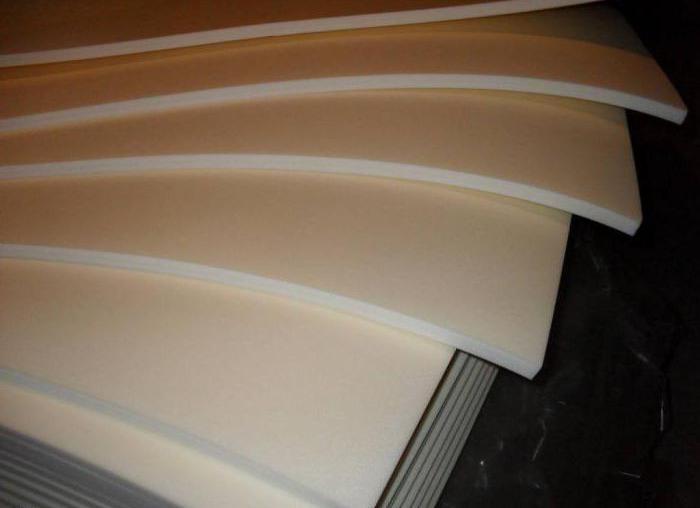
You can purchase Izolon 10 mm for 230 rubles. per square meter. However, cost is not the only thing a consumer should know when purchasing the material described. It is also important to become more familiar with the installation features. For example, Izolon requires a ventilation layer that is formed near the walls. If you exclude this stage, you may encounter the problem of destruction of the protected materials.
During installation, you should discard regular adhesive tape, as complete sealing will be required. To form a solid coating without cold bridges, it is recommended to stock up on special tape. Self-adhesive PPE, which is known as IzolonTape, has characteristics similar to the base material. Among others, plasticity, high elasticity and strength should be highlighted. Due to the applied adhesive layer, the material is easy to install.
Instructions for insulating a balcony or loggia ↑
For high-quality insulation of a balcony measuring 6 x 1 m using isolon you will need:
- 25 meters of 5 mm foil isolon
- 25 meters of 3mm foil isolon with lavsan
- warm floor (6 squares are taken as standard)
- timber for sheathing the walls, floor and ceiling of a balcony (beam 50 x 40 mm is perfect)
- glue for underfloor heating (you can take one and a half bags of Bernauf glue)
- 6 meters of reinforcing mesh
- The first layer of isolon (5 mm) is laid with the reflective side inward, followed by foam plastic, and then the second layer of isolon with lavsan (3 mm), which, like the first, is laid with the reflective layer inward. Thus, we get a sandwich made of foil-coated isolon and polystyrene foam.
- Next, the ceiling is insulated in the same way and lathing for plastic panels
- When insulating a balcony, foil-coated isolon is always placed inside
- After laying the foam and sheathing, it is necessary to foam all the grooves, be sure to level the sheathing
- The next step is the installation of thermal field panels
- As a covering, it is recommended to take a magnetized sheet of centimeter thickness (if the floor is not intended to be finished with tiles or laminate, you will need several centimeters of such a sheet or 2 layers)
- To improve the adhesion of the adhesive to the floor, it is recommended to lay a mesh
- The final stage is laying tiles or laminate flooring, sealing seams (in the case of laying tiles), trimming excess isolon
Finally, it is worth emphasizing that foil-coated isolon, as a heat-insulating building material , is fully approved for use by the Ministry of Health, the State Construction Committee, as well as the State Fire Safety Department of the CIS countries based on the developments of the Moscow Design and Research Institute of Public and Residential Buildings.
choosing insulation material for your balcony or loggia? Pay attention to the technical characteristics of penoplex; it will be ideal for your purposes. Read our review article about this material.
You can read about the characteristics and scope of application of Aquastop waterproofing here.
Please note that you can read about the benefits of cork wallpaper for the walls of your balcony or loggia at this address: https://nashbalkon.com/otdelka/otdelka-sten/probkovye-oboi-dlya-sten.html.
Installation features
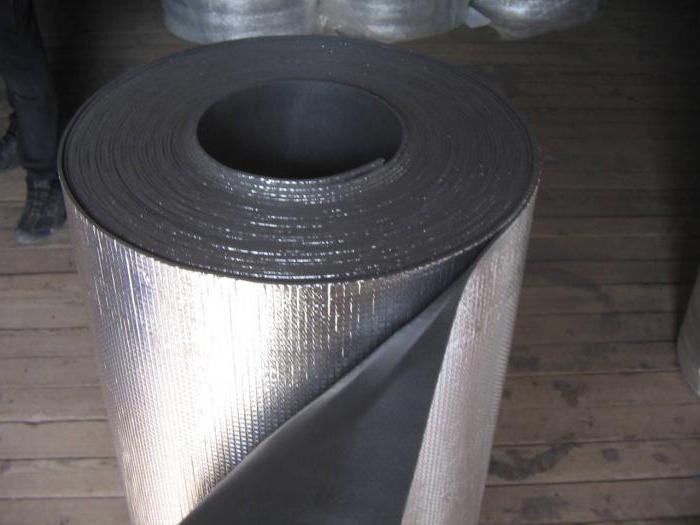
The characteristics of Isolon are not all that the consumer should familiarize themselves with. It is also important to know about the installation features. There should not be any difficulties during the installation process, this applies even when there are no professional skills. The installation rules come down to a simple algorithm. At the first stage, it is necessary to select a material of suitable thickness. This takes into account the material at the base of the insulated surface, as well as the configuration features of the base.
Izolon insulation may involve cutting elements of suitable shapes and sizes. It is very convenient to perform these works with a sharp knife. When laying a self-adhesive type of thermal insulation, you should remove the protective film and arrange the insulation parts in the required order. They should be pressed to the surface.
If you have non-self-adhesive insulation, then you should use adhesive solutions or acrylic-based compounds to attach it. All slab joints must be fastened with mounting tape, welded or connected using staples from a construction stapler.
Balcony insulation with isolon
- Isocom – from 100
rub/1m2 Installation 1 day!
- Foil-coated isolon – from 320
rub/1m 2
- 5 year warranty!
Foil isolon is foamed polyethylene covered with a layer of foil. The foil layer reflects approximately 96.5% of the heat, which is why the material perfectly maintains a comfortable room temperature. At the same time, it does not absorb moisture and repels steam. Quite popular both in everyday life and in construction. Like penofol, it creates the effect of a thermos.
The use of this material today is widespread due to its truly good thermal insulation properties. Specialists of our company highlight another advantage of isolon - ease of installation, however, recommending that the sealing of its layers be taken into account. An additional plus is that the material is not afraid of direct sunlight and has high sound insulation properties.
Material characteristics
Due to its multi-functionality, Izolon has many applications, and not only in construction.
It is worth highlighting its many additional advantages:
- Elasticity, softness, low weight.
- Durability is associated with microbiological resistance (the material is not subject to rotting).
- Environmental Safety. The material is odorless, non-toxic, and is approved for contact with food and human skin. Therefore, using Izolon, you do not need to worry about animals and children.
Advice! We recommend that beekeepers, taking care of the preservation of bee colonies in the cold season, insulate their hives with Izolon.
- Chemical stability. Izolon has high oil and petrol resistance, compatibility with aggressive building materials (lime, gypsum, cement, etc.)
- Convenience, ease and simplicity of installation, the ability to perform work without special tools and construction skills. This allows you to significantly save money and reduce the construction and renovation time of the house.

Izolon is suitable not only for residential premises, but also for garages and warehouses
Reviews from our clients
I would like to say a huge thank you to the GK Expert company, the very responsive manager Marina and the highly qualified specialist in his field Stas. Special thanks to him! I decided to specifically insulate the loggia and only in this company I found the service of foam insulation at a very reasonable price. At first I was very surprised that different teams came for each operation. They dismantled the old balcony, then put in windows, then covered it, insulated it, sheathed it... They took out all the garbage from the old balcony, it became even cleaner than it was :))). And all this was done by different people. It’s unusual, and I didn’t expect everything to work out so well. People are different, but the professionalism is the same. High!
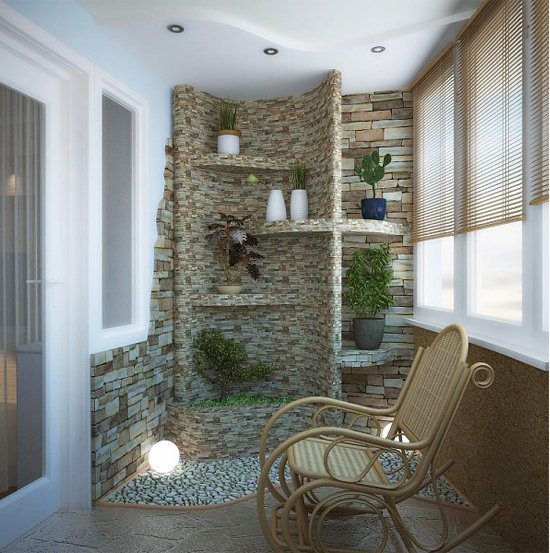
Our house is a unique phenomenon in the bad sense of the word. When it was built, they completely forgot about insulation. And as soon as the autumn rains begin, the walls become covered with stains and stains, and mold appears in the corners. The wife insisted on glazing and repairs, fearing for the health of her elderly parents. We decided to turn to the experts of Expert Group because the neighbors on the floor above, thanks to them, turned the loggia into a real oasis. A turnkey finishing complex with insulation and wall covering is an expensive proposition, but the result exceeded our expectations. Now we relax on the balcony, and store potatoes and jars of jam in the garage. Very pleased and grateful!
Six months ago we glazed a large balcony, contacted the company “GK Expert”, our neighbors advised us. The work was done well and competently, and everything was done on time, and most importantly, very carefully, they didn’t leave any traces anywhere. And their manager is pleasant, smiling and happy with life, he always communicated politely. They also gave us a good discount and gave us insulation as a gift, it’s nice when they care so much about you and give you more gifts! In general, both the service and quality are excellent, what more could you ask for?
Nadezhda Khudyakova, Moscow
The balcony was glazed by the Expert Group company. I liked the quality work, good service. We doubted it, so I spent a long time looking for someone to order from. We chose Expert Group because our friends recommended this company to us, and they gave us a good discount. We were flattered by this! We chose warm glazing with the Rehau profile, received i-glass as a gift, now it won’t be cold in winter and not hot in summer. A very nice gift! Thank you for such a warm meeting with clients! Success and prosperity in your future career!
Anastasia Melnik, Moscow
Great company! I ordered decoration for a balcony in Leningrad. At first I was pleased with the guarantee that the company provided, thereby instilling confidence =) The finishing was done quickly, on time. I was very pleased with the work done, the workers did everything the way I wanted. We installed a wardrobe on the balcony, replaced the windows, and made a beautiful ceiling. In general, everything is great. But the best part is the discount I received
